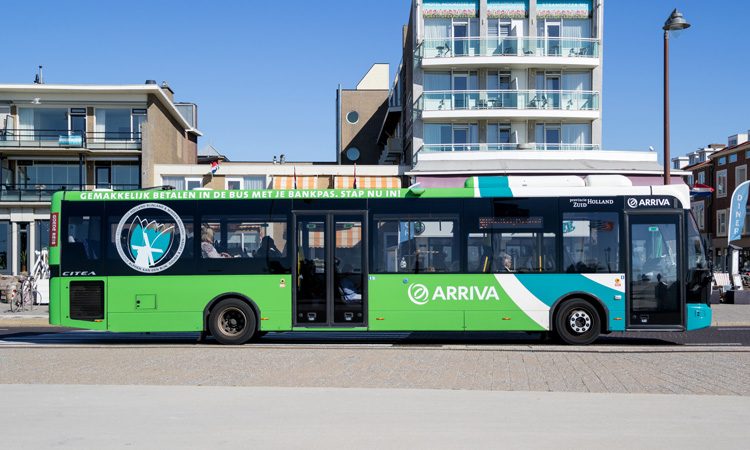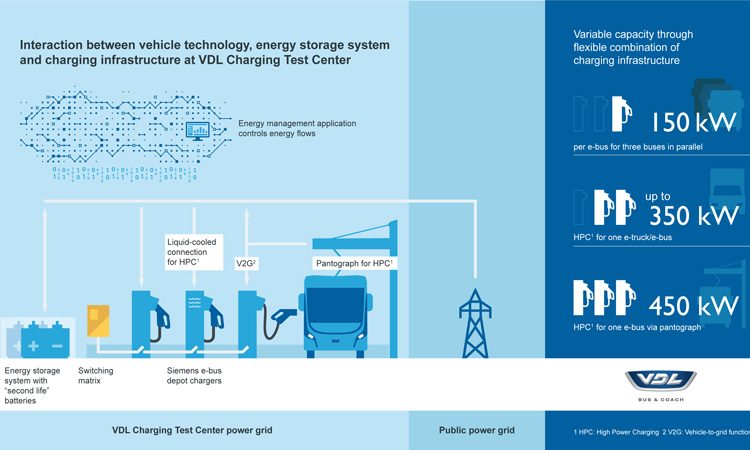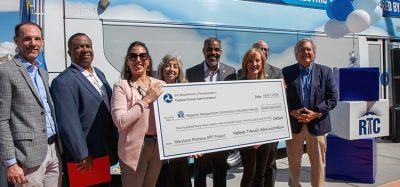VDL expands Charging Test Center with new charging technology
- Like
- Digg
- Del
- Tumblr
- VKontakte
- Buffer
- Love This
- Odnoklassniki
- Meneame
- Blogger
- Amazon
- Yahoo Mail
- Gmail
- AOL
- Newsvine
- HackerNews
- Evernote
- MySpace
- Mail.ru
- Viadeo
- Line
- Comments
- Yummly
- SMS
- Viber
- Telegram
- Subscribe
- Skype
- Facebook Messenger
- Kakao
- LiveJournal
- Yammer
- Edgar
- Fintel
- Mix
- Instapaper
- Copy Link
Posted: 15 October 2019 | Intelligent Transport
VDL Bus & Coach and Siemens have collaborated to provide more insight into smarter, more efficient use of the existing power grid and new e-vehicle charging technology.


VDL Bus & Coach (VDL) has expanded the technological capabilities of its Charging Test Center to investigate how vehicle technologies, energy storage methods and charging systems can work collectively.
The VDL Charging Test Center, located in Valkenswaard, The Netherlands, has been expanded with three Siemens fast-charging stations and a VDL energy storage system in order to provide more insight into smarter, more efficient use of the existing power grid and new charging technology.
The centre will focus on bi-directional charging of heavy vehicles which sees electric vehicles not only draw energy from the power grid and energy storage systems, but also deliver the energy back to the systems.
The technology has been designed to boost interoperability – the mutual communication and exchange of information – of heavy electric vehicles and charging infrastructure. Through this initiative, VDL intends to gain greater insight into the entire power supply chain for electric heavy vehicles so that more sustainable mobility solutions can be developed that ultimately contribute to a successful energy transition.
“Deployment of heavier e-vehicles also involves technical issues such as the increasing energy demand and unpredictable load on the power network,” said Menno Kleingeld, Managing Director of VDL ETS (Enabling Transport Solutions). “It is important to use alternatives, both for smarter planning of charging times, and so that energy can be temporarily stored in a buffer. This temporary buffer can then supplement the available capacity of the power grid to deliver power back to the vehicles during periods of peak load. This new technology allows us to investigate how we can reduce the load that charging sessions place on the power grid, and how we can properly store the available energy capacity and distribute it based on demand.”


Interaction between vehicle technology, energy storage system and charging infrastructure at VDL Charging Test Center
The data from the charging stations and energy storage system are managed via a cloud-based energy management application. Using the data, the charging of the vehicles can then be actively controlled through a ‘switching matrix’ which allows the available power capacity to be flexibly deployed and used accordingly.
“We are excited to collaborate with VDL on this innovative project, which brings us a step closer to making e-mobility more flexible and efficient,” said Monique Mertins, Head of Charging Infrastructure for eBus and eUtility Vehicles at Siemens Smart Infrastructure. “The charging electronics can be temporarily interconnected, making it possible to charge three vehicles in parallel with a capacity of 150 kW each, or one vehicle particularly rapidly up to 450 kW using High-Power Charging (HPC). This means power can be adjusted flexibly and the charging infrastructure optimised for depots with different requirements.”
Related cities
The Netherlands
Related organisations
Siemens, VDL Bus & Coach
Related people
Menno Kleingeld, Monique Mertins








